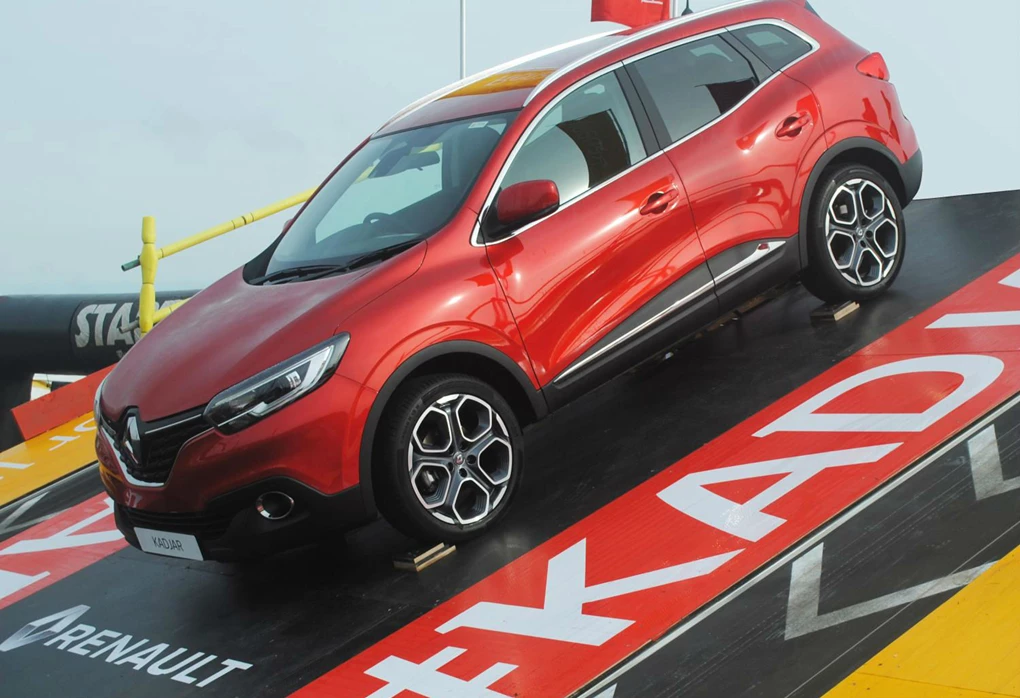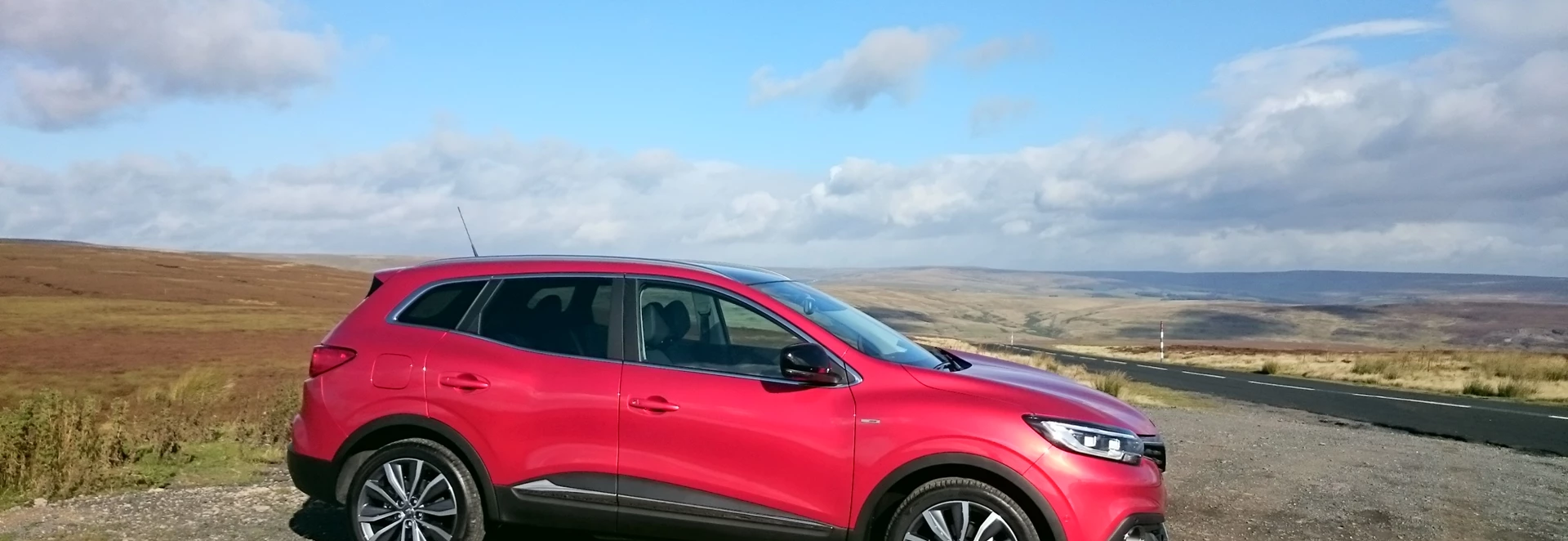It’s fair to say Renault SUVs haven’t been the most successful – we’re looking at you Koleos – but, that could all be set to change. Where Renault merely dipped its toe in the SUV waters, the French car maker is taking crossovers far more seriously. The Renault Captur has become the best-selling small crossover in Europe, and very good it is too.
Time to meet its big brother, the Renault Kadjar. And, with around 60 per cent of its components shared with the award-winning Nissan Qashqai, it’s already off to a flying start. So, let’s tackle the elephant in the room first; why should you buy the Renault? Well, 95 per cent of the parts you can see are new, so perhaps it comes down to taste. Oh, and it’s ever so slightly cheaper too.
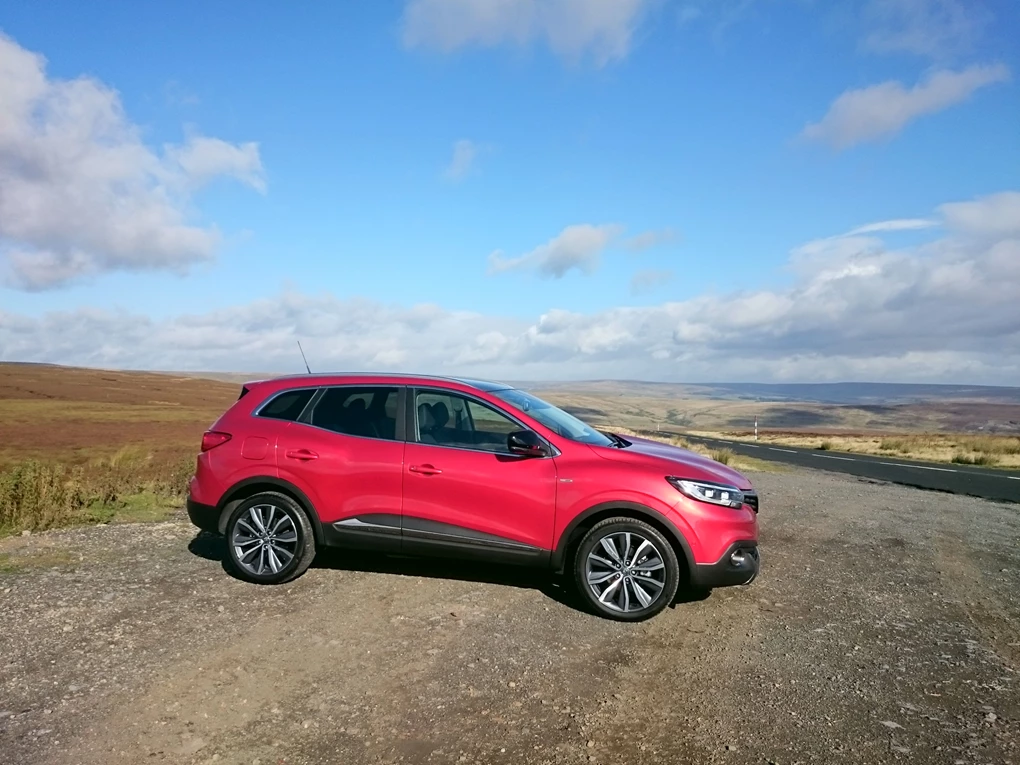
Performance
Renault has concentrated on economy, so performance is best described as adequate. Diesel customers can opt for a 1.5-litre with 108bhp or a 1.6-litre with 128bhp, with the latter available with four-wheel drive. Really though, the Kadjar is a predominantly front-wheel drive model, with just ten percent of customers expected to specify 4WD. The 1.5-litre gets the Kadjar from rest to 62mph in 11.9 seconds, while the bigger engine takes 9.9 seconds, or 10.5 if you add four-wheel drive.
We tried both and they felt perfectly adequate for day-to-day driving. But, given the Kadjar’s design brief – we imagined it full of passengers, with bikes on the back and a roof box – the most powerful engine would be our pick.
There’s also one petrol option, a 1.2-litre turbo with 128bhp and 205Nm of torque (the 1.6-litre diesel has 320Nm). It accelerates from zero to 62mph in 10.1 seconds and could prove popular with owners who regularly drive short distances or around town. The diesel should be a better bet for those who often hop on the motorway. If you need an automatic you’ll be limited to the 1.5-litre diesel, as it’s the only version currently equipped with a self-shifter. A quick note on the six-speed manual - it can be notchy through the higher gears, especially when you switch from fourth to fifth. The manual has quite a long throw, too.
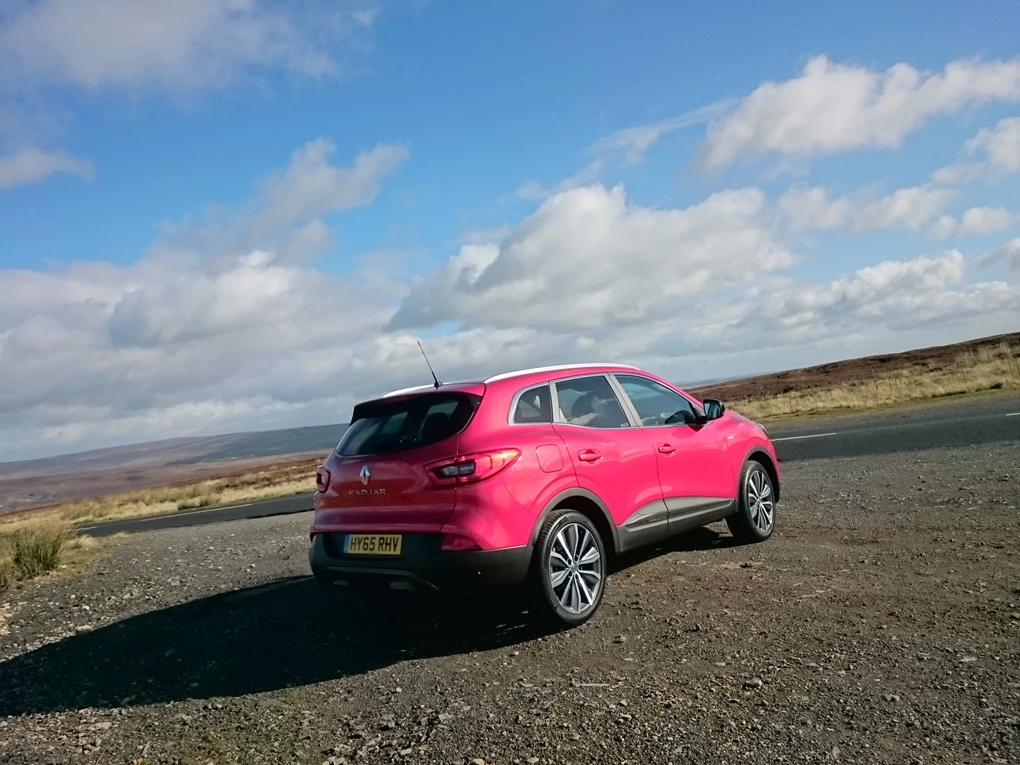
Ride and Handling
Lock mode splits power 50:50 between the front and rear at speeds below 25mph if the going gets really tough.
The Kadjar is sure to suit its intended audience, with lots of grip around corners, little body roll and a comfortable ride. We tested it fitted with 19-inch alloy wheels, which do allow a few bumps to filter into the cabin, but it’s still fine most of the time. For the best blend of comfort and handling, however, the 17-inch standard wheels with the Dynamique Nav trim level should be ideal. If you plan on towing, the 1.5-litre diesel can pull a 1,350kg unbraked trailer, while the petrol can manage 1,500kg and the 128bhp diesel hauls an impressive 1,800kg. With four-wheel drive fitted, a simple selector knob allows the driver to choose between 2WD, Auto and Lock modes. The first disconnects drive to the rear wheels for better economy, while Auto sends power to the rear wheels if it detects a loss of traction. Lock mode splits power 50:50 between the front and rear at speeds below 25mph if the going gets really tough.
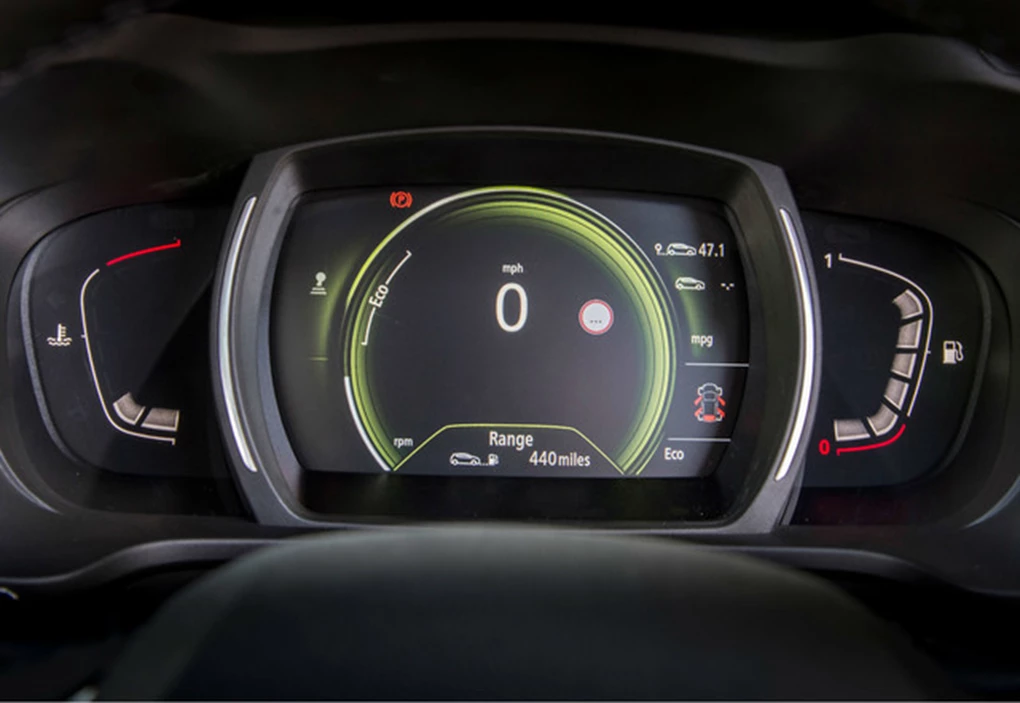
Interior and Equipment
The word ‘Kad’ is evocative of ‘quad’, meaning all-terrain, while ‘Jar’ is derived from the French word for agile.
Hop in the Kadjar, and the first thing you’ll notice is the large digital instrument display, which is standard across the range. It’s bright and modern, but we were a little disappointed Renault hasn’t included some more animated graphics, as it essentially mimics traditional gauges. It’s easy to find a comfortable driving position, and the Kadjar has a simply laid out console, which is easy to get used to. Quality is pretty good too, with plenty of nice materials on display, and a solid feel to the controls, which should take a few knocks and spills in their stride. The boot measures 472 litres, which importantly beats the Qashqai’s luggage space by 42 litres, thanks to a longer rear overhang. It’s not the biggest in class though, with the Hyundai Tucson offering 513 litres behind the rear seats. Trim levels start with Expression+, which does without alloy wheels, but includes most essentials and an impressive list of safety equipment. The sweet spot of the range is arguably the Dynamique Nav, which adds 17-inch alloys and a 7-inch touch-screen infotainment system with sat-nav. It also gets desirable kit like roof rails, auto lights and wipers, leather pieces of trim and cornering fog lights. Dynamique S Nav brings 19-inch wheels, front and rear parking sensors, easy folding rear seats and a leather interior. Step up to the range-topping Signature Nav grade and you get LED headlights, a panoramic sunroof, interior trim enhancements and a BOSE sound system with DAB radio.
Cost
Economy is excellent, with the dCi 110 managing 74.3mpg and emissions of just 99g/km of CO2.
Starting from £17,995, it’s hard to argue with the Kadjar being great value for money. Even our pick of the range, the Dynamique Nav dCi 130 with front-wheel drive, comes in at just £22,795. You can get carried away, however, with the top model coming in at £26,295. Economy is excellent, with the dCi 110 managing 74.3mpg and emissions of just 99g/km of CO2, while the dCi can hit 65.7mpg and it emits just 113g/km. Add four-wheel drive to the latter and this dips to 58.8mpg and 126g/km.
Our Verdict
The Nissan Qashqai vies for class honours in the crossover market, and for many customers the Kadjar will be even better. Styling is of course subjective, but we think the Renault has a slightly neater design and it outperforms the Nissan in some key areas too. If you’re after a crossover which mimics a more traditional SUV, the Hyundai Tucson and Volkswagen Tiguan are a better bet, but for many families the Kadjar will make a compelling alternative to a conventional hatchback.
